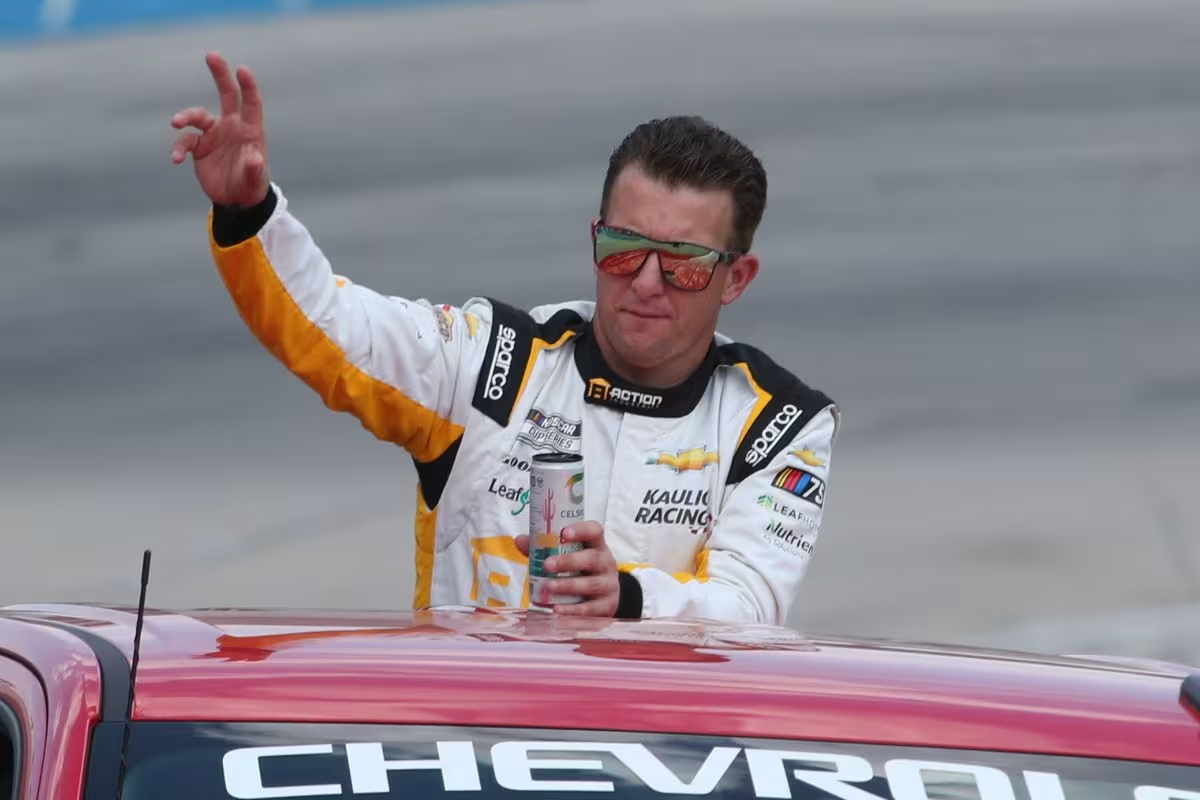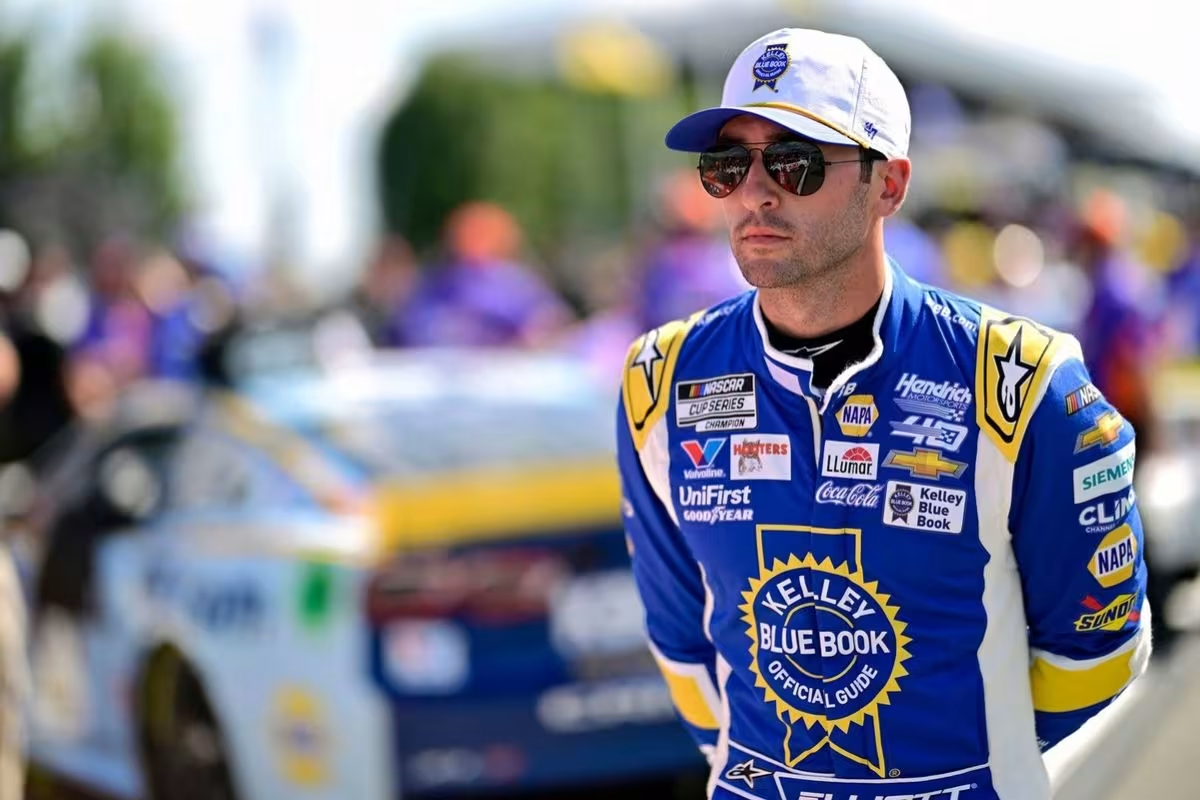Charlotte ROVAL Alterations: The upcoming Bank of America ROVAL 400 at Charlotte Motor Speedway has sparked concerns among NASCAR drivers due to recent track changes. Modifications, especially around Turn 7, have raised questions about handling, safety, and overall race strategy. With the race being the final chance to advance to the playoffs’ Round of 8, these adjustments add unpredictability.
Key Highlights
- Recent modifications at Turns 5, 6, and 7 have raised concerns among drivers about increased chaos and collision risks during the race.
- The resurfacing of Charlotte Motor Speedway has created unpredictable grip levels, complicating handling and braking for drivers.
- Playoff implications make performance in the ROVAL race crucial, intensifying pressure and rivalries on the track.
- Drivers like Chase Elliott are adapting strategies to navigate the altered layout, emphasizing the importance of preparation and understanding track nuances.
- Safety concerns are heightened due to the potential for increased speed and aggression, necessitating ongoing evaluation of risks associated with the modified track.
Charlotte ROVAL Alterations Spark Driver Concerns
Altering the Charlotte ROVAL layout has ignited a series of concerns among drivers as they prepare for the upcoming race at Charlotte Motor Speedway. The modifications, particularly around Turns 5, 6, and 7, have introduced a narrower corner at Turn 7, prompting apprehension regarding the implications for vehicle handling and race strategy. Given that NASCAR Cup cars are bulky and less agile than their counterparts in other motorsport disciplines, the tighter configuration raises valid questions about safety and competitive integrity.
Drivers have expressed their worry, with notable commentary from Denny Hamlin, who articulated that the redesign appears to intentionally encourage increased chaos. As Hamlin pointedly noted, the adjustments make corners sharper and more challenging, potentially exacerbating the risk of collisions and errors during high-stakes racing situations.
“The reconfigure was designed to create more chaos. You’re going to have to convince me otherwise of that, They make corners sharper and tighter. It was tighter in Turn 7 anyway, but now they made it to a point.” – Hamlin
These concerns resonate across the paddock, as the prospect of maneuvering a more constricted track can greatly alter driving lines, overtaking opportunities, and general race dynamics.
In response to these apprehensions, Greg Walter, president of Charlotte Motor Speedway, has sought to assuage fears by emphasizing the intention behind the reconfiguration.
Resurfacing and Playoff Pressure Ahead of Bank of America ROVAL 400
As the countdown to the Bank of America ROVAL 400 intensifies, the recent resurfacing of the Charlotte Motor Speedway adds another layer of complexity for drivers already grappling with heightened playoff pressures.
With the track fully resurfaced, competitors find themselves facing an unfamiliar terrain, which prompts a natural skepticism among them. As they prepare for this critical race, the stakes are undeniably high, especially since this event marks the final opportunity to advance to the Round of 8 in the playoffs.
- Unpredictable Grip Levels: The new asphalt may yield varying grip levels, challenging drivers to adapt their handling and braking techniques.
- Enhanced Passing Zones: The modifications, particularly at Turn 7, are designed to create new opportunities for overtaking, which could dramatically alter race dynamics.
- Pressure to Perform: With previous ROVAL winners being non-playoff drivers, the urgency for playoff contenders to secure crucial points will weigh heavily on their performance.
Greg Walter’s remarks about drivers inspecting the course reflect a broader narrative of competitive anxiety. As drivers navigate this uncharted course, they must harness both skill and strategy to mitigate risks while vying for a chance at championship glory.
We have this culture here, of being constructively discontent. It’s funny, we’ve seen some of the drivers come out here to take a walk. ‘Oh, I’m just out here taking a walk around the course.’ They’re all down there at Turn 7 to see how that’s going to impact them. It’s fun, right? At the end, it’s all about the fans. Our heart is to put on a good show for the fans. In road courses, braking zones equal passing zones. Hopefully what we’ve done is create two new passing zones. This Turn 7, we have worked really hard on getting it right. I’m hoping that delivers for the fans what we hope it will.” -Walter
AJ Allmendinger Responds to 2023 ROVAL Race Criticism
Amid growing examination surrounding the 2023 ROVAL race, AJ Allmendinger found himself at the center of a conversation that questioned the entertainment value of his victory. While Allmendinger clinched the race, a tangible criticism emerged regarding the perceived lack of excitement during the event. Fans and analysts alike expressed disappointment, prompting inquiries into whether the Charlotte Motor Speedway‘s (CMS) recent alterations were a direct response to the race’s perceived blandness.
Allmendinger’s reaction was remarkably buoyant, imbued with a sense of humor as he addressed the evaluation. He remarked, “I still hope I make it boring. No, I don’t think that’s true, but it gives me confidence. I’m gonna say yeah, it’s all because of me.”
This response reflects Allmendinger’s character and a deeper understanding of the complexities inherent in motorsport entertainment. His dismissal of blame shows a willingness to engage in dialogue while acknowledging the multifaceted nature of racing dynamics.
The anticipation surrounding the 2024 Bank of America 400 suggests that the adjustments made to the 17-turn track may improve the complete experience for both drivers and fans.
Austin Cindric and Ryan Blaney’s Strategies for the ROVAL
With the spotlight shifting from AJ Allmendinger’s entertaining yet scrutinized victory to the tactics of key competitors, Austin Cindric and Ryan Blaney emerge as pivotal figures in the upcoming ROVAL event.
Cindric currently occupies the 11th spot, closely trailing Chase Briscoe. His recent near-win at Talladega, marred by a multi-car wreck, has left him enthusiastic to capitalize on any opportunity.
Cindric’s plan hinges on a proactive approach, where he highlights the necessity of exploiting his competitors’ misfortunes. He articulated, “If something happens to the #45, the #9, and the #11 in the initial stage, I think a lot has to happen for us to not just go for the win.” This insight emphasizes his readiness to seize the moment during uncertainty.
In contrast, Blaney, the driver of the No. 12 Ford, is leveraging his previous ROVAL success to inform his tactics. His focus is on the newly modified frontstretch chicane, which he believes presents improved out-braking opportunities.
He stated, “I think the frontstretch chicane is going to be a slower corner, so I feel like you might have some more out-braking potential there.”
Chase Elliott’s Perspective on ROVAL Changes
The anticipation surrounding the ROVAL race is heightened by Chase Elliott‘s thoughtful analysis of recent track modifications. As a two-time winner of this event, Elliott possesses a unique perspective on the implications of the changes, particularly around Turns 6 and 7. He draws attention to the fact that these adjustments will greatly alter the flow of the lap, necessitating a fresh approach to strategy and execution.
Elliott likens the modified course to a new racetrack, indicating that he has adapted his preparation accordingly. He has invested time in a simulator to familiarize himself with the revised layout, emphasizing the importance of understanding the track’s surface nuances and irregularities. “Typically, those track scans are pretty good,” he states, highlighting the value of simulation technology in modern racing. This preparation is essential, especially given the compressed schedule leading into the race.
“That section of the track is going to change the entire flow of the lap there, so I’ve been kind of approaching it as a new track with my preparation. I’ve spent some time in the simulator, just trying to really memorize the track and where the little bumps are. Typically, those track scans are pretty good. I think that’s probably one of the best things about the simulator is that a driver can go and get familiar with the track layout, surface content, roughness, so on and so forth. It’s really about all I feel like I can do until we get some time on track. Obviously, we have extra practice next week, so hopefully that’s enough to find a good rhythm and get a good flow for qualifying and then obviously for the race.” – Elliott
Moreover, Elliott’s insights shows the balance between adaptation and experience. While he feels confident with his past successes, the evolving dynamics of the track may introduce unforeseen challenges. The potential for altered racing lines and increased aggression among competitors could lead to unpredictable outcomes, particularly in a playoff context where tensions are high.
News in Brief: Charlotte ROVAL Alterations
The modifications to the Charlotte ROVAL, particularly the narrowing of Turn 7 and the recent track resurfacing, introduce heightened risks that could greatly impact race dynamics. Drivers’ concerns regarding potential collisions and unpredictable grip levels underscore the crucial balance between competitive excitement and safety. As playoff pressures mount, the tactical implications of these changes may lead to both thrilling overtaking opportunities and increased chaos.
ALSO READ: Chevrolet’s Performance Dilemma: NASCAR Better Off with the Camaro?




